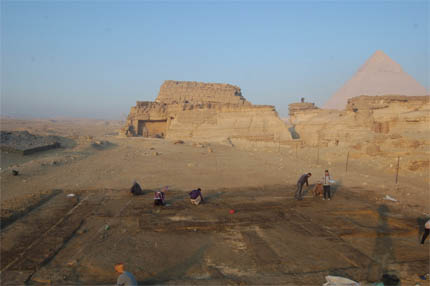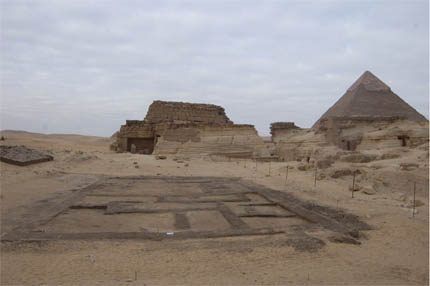Posted by Essam Shihab, SCA Archaeologist
Modern life provides clues to the past. I started the 2012 season by cleaning the houses in the north side of the Khentkawes causeway in order to record them. We defined the walls, exterior and interior, that form the houses, we defined the earlier phase of usage of the houses and the later phase that witnessed the modifications and additions, which are represented in the blocking events and new dividing walls. But I found something that made me think about modern life in the villages.
Frequently, in modern villages the level of the ground of the streets is higher than the entrances of the houses, and the people must do something to prevent rainwater from running into their houses. By raising the door sills, they create a dam that keeps the water out. In the village societies when their houses became very old and the unpaved streets become higher because the dirt collects in them, they cannot always demolish the house and rebuild a new one higher. As a short-term solution, they remove the roofs and build the old walls higher. They seal up the windows that became very close to the ground and fill the inside spaces to raise the level of the floors. I have the same situation in the houses of Khentkawes Town, where we find many examples of blocked entrances. I also think since the houses of Khentkawes belong to the religious officials, the priests, we have to think of the religious practice and conduct within a household as a setting providing an outlet especially for expressing and addressing the concerns of everyday life.



